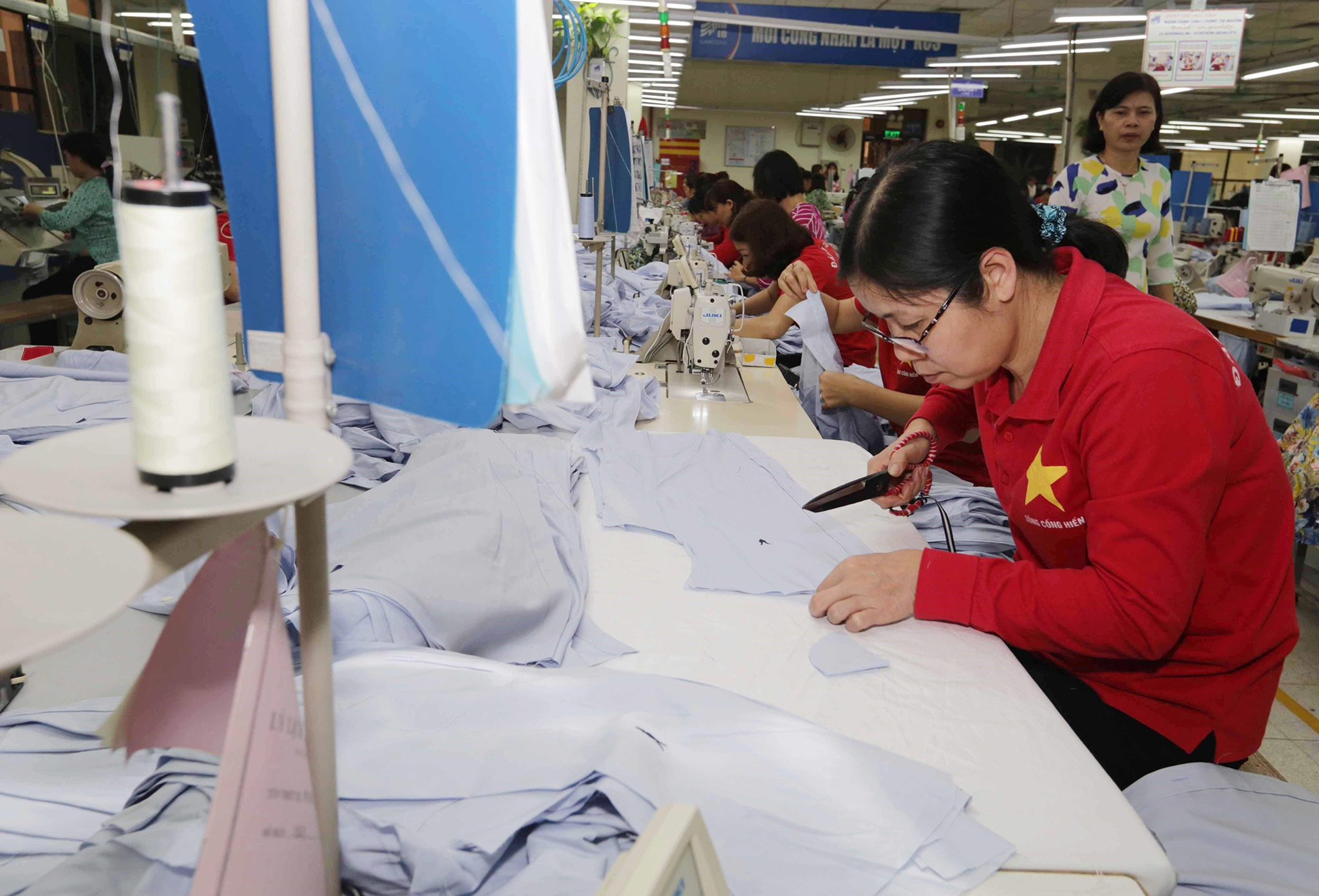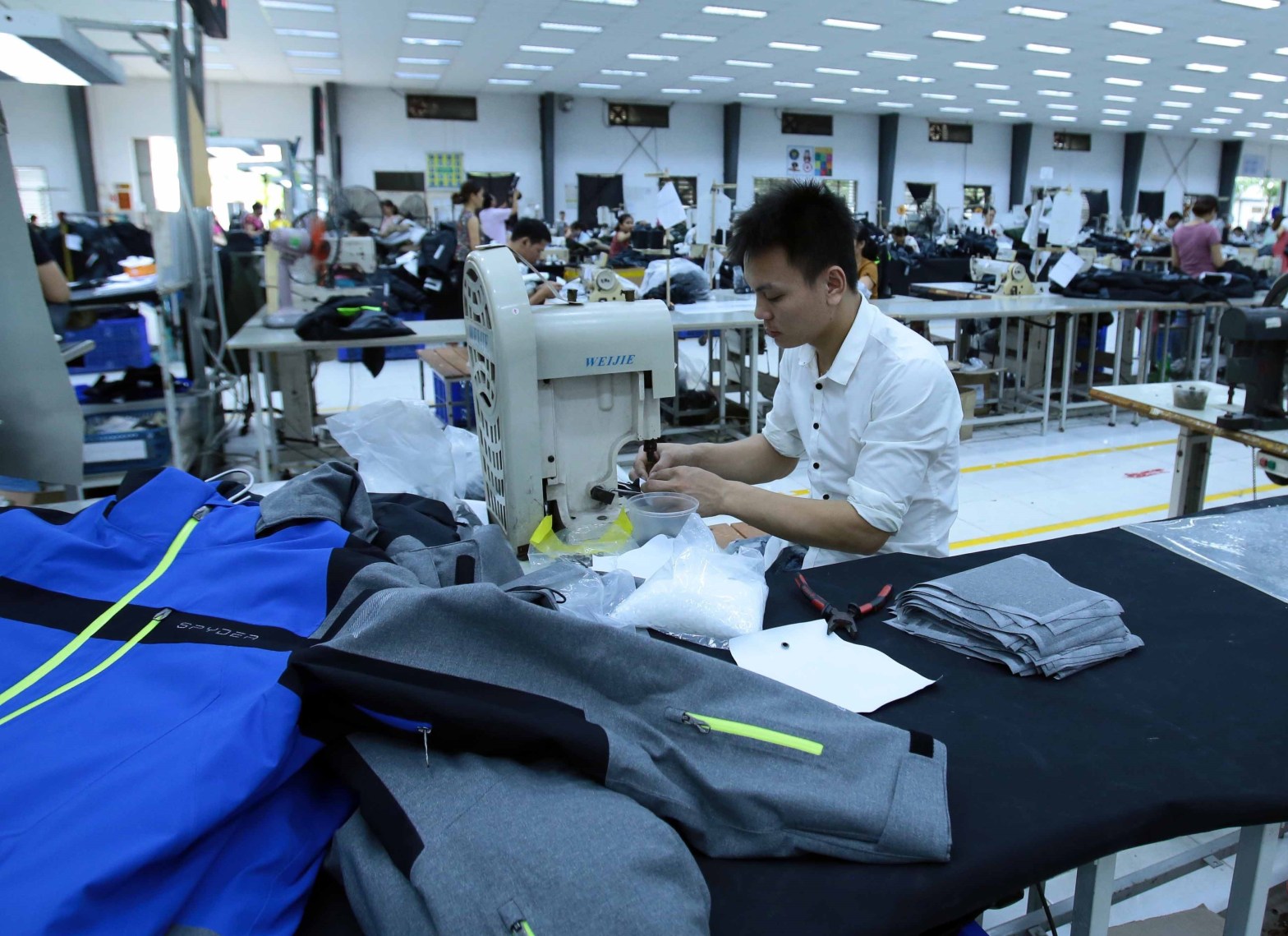Garment and textile products was among the top exports of Vietnam in 2018 after reeling in more than 36 billion USD in revenue, an annual increase of 16.1 percent.
Speaking to VietnamPlus, Cao Huu Hieu, Director of the Vietnam Textile and Garment Group (Vinatex), said many apparel firms have gained a foothold in the market. In 2018, Vietnam’s garment-textile sector was ranked third worldwide, after only China and India.
DEEPER PENETRATION OF NON-TRADITIONAL MARKETS
The garment-textile sector has met its yearly goal for 2018. What were the highlights of the past year?
Since the third quarter of 2018, the US – China trade war has affected the global economic situation, particularly the garment-textile sector. But overall in 2018, garment-textile imports of big markets were quite positive. For example, the figures for the US were estimated at 118.9 billion USD, increasing 4.2 percent year on year; the EU 283.2 billion USD, up 8.02 percent; Japan 38.16 billion USD, up 8.9 percent; and the Republic of Korea 15.51 billion USD, up 7.16 percent.
In addition, the global economic picture last year followed positive trends, with the US economy flourishing thanks to the policies of its president.
The US’s improved job market pushed up household spending, leading to better textile imports. Similarly, the EU and Japanese economies also grew well in the first nine months due to the governments’ market intervention and spending boost.

What impact will the Comprehensive and Progressive Agreement for Trans-Pacific Partnership (CPTPP) have on Vietnam’s garment-textile industry?
First, the CPTPP leads to market opening, meaning Vietnam will more deeply penetrate non-traditional markets like Canada and Australia.
For example, in 2017, those from Vietnam accounted for 5.9 percent and 2.8 percent of the total garment-textile imports of Canada and Australia, respectively. As such, room for Vietnamese exports to the two markets remains extensive.
The deal, meanwhile, will boost exports by cutting tariffs. For example, Canada’s most favoured nation (MFN) tariffs, which average 17-18%, will be zero for the HS50-60 tariff line (fibre, yarn and fabric) and some products of the HS 61 and 62 lines when the CPTPP takes effect.
Some Vietnamese exports to Canada, such as outerwear, windbreakers and ski suits, will see their tariffs eliminated four years after the pact comes into force.
Notably, the agreement will promote investment in material production, forming a support industry for the sector. The CPTPP will make foreign investors see Vietnam as an attractive destination in terms of market opportunities, alternative supply strategies and production costs.
Then they will consider moving production lines and transferring technology to the country, and investing in its supply chain, helping the local garment-textile sector become more competitive and less reliant on imported materials.
The CPTPP has strict origin requirements. What do you think of domestic companies’ capacity to meet such a demand?
To enjoy tariff incentives, Vietnamese exporters must prove their product origin starting the yarn they have used. As our orders are mainly for manufacturing apparel from imported fabric based on customers’ requests, meeting such origin requirements is far from easy.
In the CPTPP, only three groups of goods are not required to be made from the host nation’s fabric or yarn. They are suitcases, bags, women’s bras and baby clothes with synthetic fibre. But these products are not Vietnam’s strength.
In the short term, I think we cannot fully capitalise on the benefits of the deal. But in the next 3-5 years, when foreign investors see Vietnam’s potential and production costs in other countries become more expensive, they will invest in our textile and garment industry. At that time, we will gradually fulfill the CPTPP origin requirement.

BUILDING DATA SYSTEM
Apart from the origin requirement, what hurdles does the sector face from the CPTPP?
Major export markets of Vietnamese garment-textile goods have long been the US, the EU, Japan, the Republic of Korea and China. However, with its involvement in the CPTPP, Vietnam’s potential new markets are just Canada and Australia.
Combined annual imports of Vietnamese apparel by Canada and Australia are about 23 billion USD, less than the figure for Japan alone. Currently, Vietnam’s garment-textile products just occupy less than 5 percent of the total market share in the two countries, while Vietnamese enterprises have yet to obtain close customer relations there, and need more time to do so.
In addition, to be entitled to tax incentives, Vietnamese exporters must meet requirements on origin, enterprise registration and document archives, among others. However, they are not familiar with archiving documents, making it a matter that needs more attention.
Finally, our international competitors such as China, India, Bangladesh, Pakistan and Indonesia will move to support their businesses. For example, India has set up export support funds, and other funds to reduce import tariffs imposed on machinery materials, while China has devalued the yuan to promote exports.
What measures are taken by Vietnam’s garment-textile sector to overcome such hurdles?
Overall, to exploit CPTPP markets, Vinatex has focused on trade promotion and direct approaches to customers.
Previously, garment enterprises often exported their products via intermediaries in China and Hong Kong, but now the tendency to work with customers has become more common to avoid unnecessary intermediate costs.
Within the past year, Vinatex has sent several delegations to meet customers in Canada and Australia, with direct orders sealed.
Vinatex sees it as vital to improve autonomy capacity regarding material sources, so money has been poured into yarn projects like the Phu Hung and Nam Dinh yarn production plants.
The group has also encouraged its member enterprises to work with customers for joint investment in production and technology transfer.
PRESSURE ON DOMESTIC COMPANY
What do you think of the pressure the CPTPP will put on Vietnam’s fashion industry?
In 2015, when the negotiations of the EU-Vietnam free trade agreement and the Trans-Pacific Partnership (TPP) deal ended, FDI flow into garment-textile sector was very strong. The industry attracted about 100 FDI projects worth a total registered capital of more than 2 billion USD, a record at the time.
The CPTPP is expected to create a new wave of FDI into the country. It means the pressure on domestic businesses will increase.
Meanwhile, the local fashion industry has for years seen its market divided by different sources from domestic to imported ones.
We will open the domestic garment-textile market to the other CPTPP member nations. However, only Mexico is a strong country in apparel export with its key importer being the US due to geographical advantage. As such, I think the CPTPP pressure on our domestic market will be low.
Can you tell us more about Vinatex’s plans in developing the domestic market?
Vinatex member enterprises have long been trying to maintain and expand the domestic market, with some even affirming their unique positions in the market, including Viet Tien with shirts, or Garmant 10 Corporation and Nha Be with suits.
However, the domestic market pie involves the participation of various parties, with illegally transported goods from China posing the fiercest competition.
To adapt, each member has a strategy targeting its niche market to gain its competitive edge and build its own customer system.
For example, Duc Giang has built a brand of Spearl or Hera DG specialising in office and women’s clothing with up-to-date and eye-catching designs. Meanwhile, in the last two years, we [Vinatex] have created a distribution channel for Vietnamese fashion at 25 Ba Trieu street, earning very good revenue.
As for domestic market plans in the coming years, we will continue encouraging local firms to further expand domestic distribution channels and build their made-in-Vietnam brands. Gradually, they will dominate the market.-VNA

